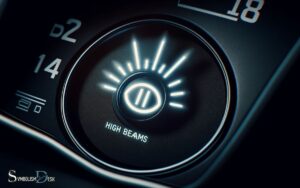Mitsubishi Car Dashboard Symbols and Meanings: Check Light!
Mitsubishi vehicles are equipped with various dashboard symbols to inform the driver about the car’s condition and potential issues.
It’s crucial for Mitsubishi owners to recognize these symbols such as the check engine light, tire pressure monitoring system (TPMS) alert, oil pressure warning, and ABS warning to maintain their vehicle’s performance and ensure driving safety.
Each dashboard symbol in a Mitsubishi car serves as an alert or informational indicator:
By understanding what these symbols mean, drivers can take timely action to prevent damage to their vehicle or avoid unsafe driving conditions.

Key Takeaway
Mitsubishi Dashboard Symbols and Their Meanings
| Symbol | Color | Meaning |
|---|---|---|
| Engine Check Light | Yellow/Orange | Potential emission control system issue |
| TPMS Alert | Yellow | One or more tires are under-inflated |
| Oil Pressure Warning | Red | Low engine oil pressure |
| ABS Warning | Yellow | Malfunction in the anti-lock braking system |
| Battery/Charging Alert | Red | Vehicle’s electrical charging system issue |
| Brake System Warning | Red | Possible brake system problem |
| Airbag Warning | Yellow | Airbag system may not function properly |
| Power Steering Warning | Yellow | Power steering system issue |
Check Engine Light
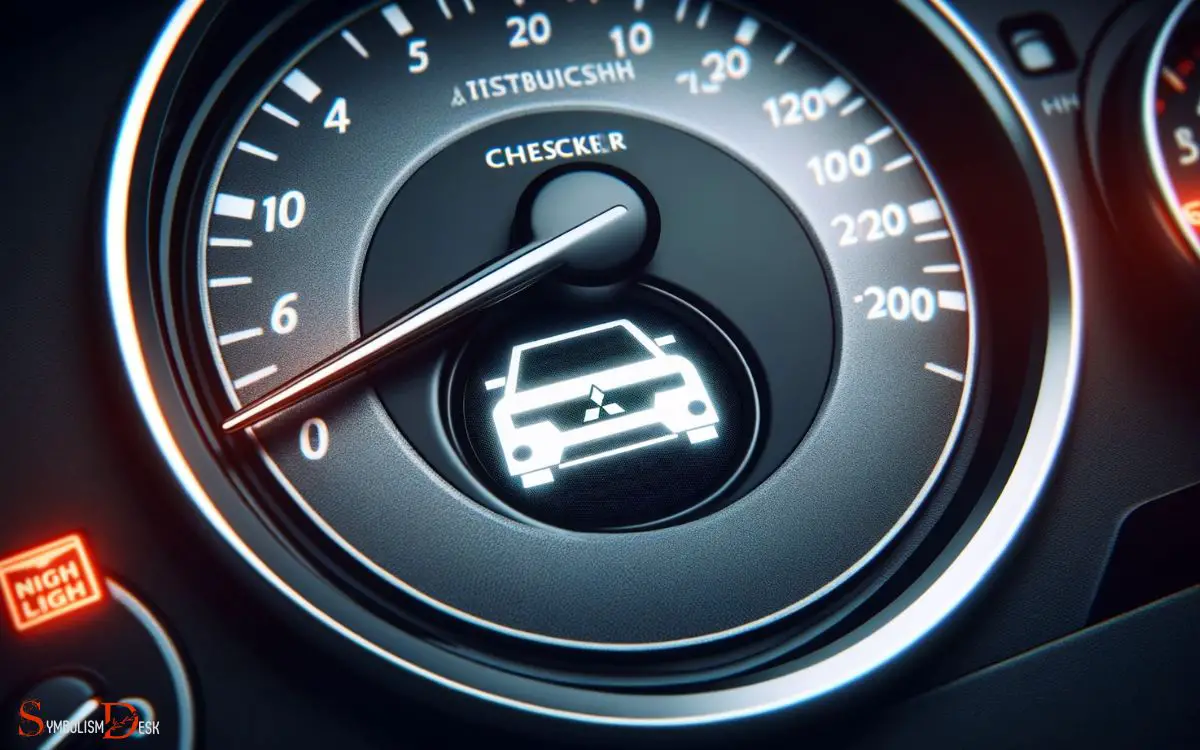
The check engine light indicates a potential issue with the vehicle’s engine or emissions system. When this light comes on, it’s crucial to address it promptly to prevent further damage.
Common reasons for this warning include a loose gas cap, faulty oxygen sensor, or a failing catalytic converter. However, it can also signal more serious problems like engine misfires, transmission issues, or a failing mass airflow sensor.
To determine the specific cause, a diagnostic scan tool can be used to retrieve error codes from the vehicle’s computer. It’s advisable to seek professional assistance to interpret these codes accurately.
Ignoring the check engine light can lead to decreased fuel efficiency, engine damage, or even safety hazards. Therefore, it’s essential to address this warning as soon as it appears.
Tire Pressure Monitoring
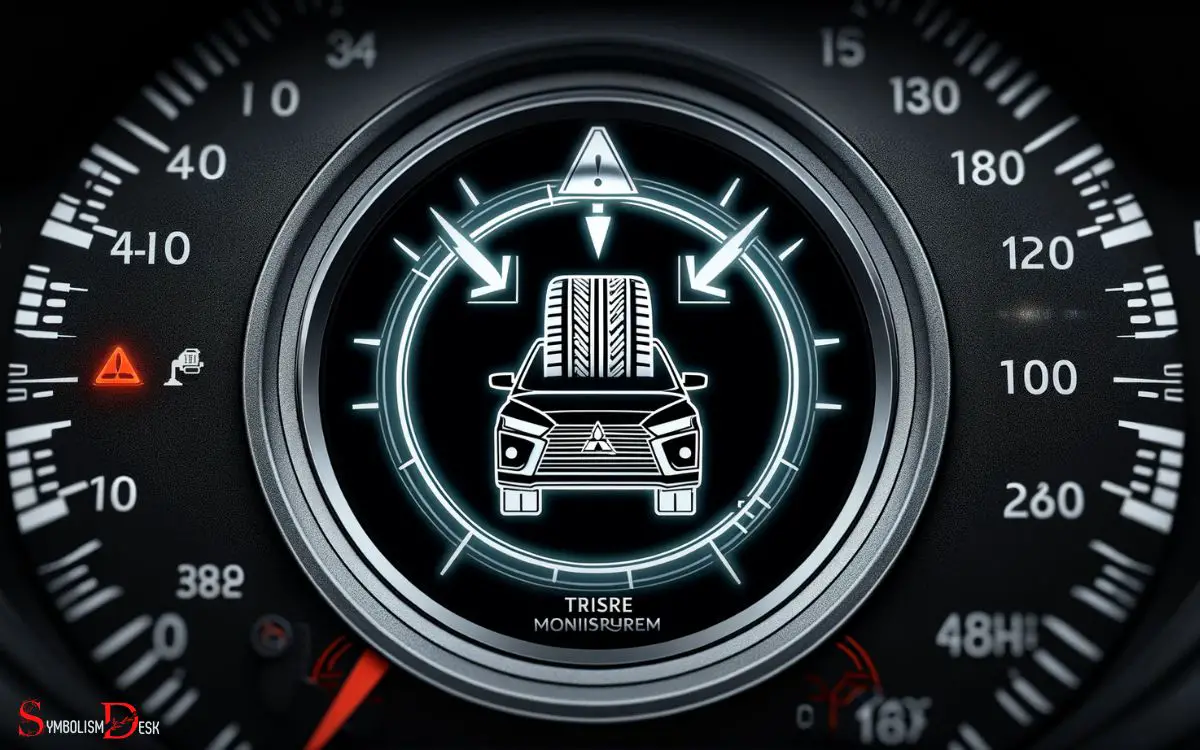
Tire pressure monitoring in Mitsubishi cars is essential for maintaining optimal tire performance and safety. This system constantly monitors the air pressure in the tires and alerts the driver if it detects any significant deviation from the recommended pressure levels.
When the tire pressure warning light illuminates on the dashboard, it indicates either low tire pressure or a malfunction in the tire pressure monitoring system.
It is crucial to address this warning promptly by checking and adjusting the tire pressures or seeking professional assistance to prevent potential tire damage or compromised vehicle handling.
Proper tire pressure not only ensures safer driving but also contributes to better fuel efficiency and longer tire lifespan.
Oil Pressure Warning
When the oil pressure warning light comes on in a Mitsubishi car, it indicates a potential issue with the engine’s lubrication system.
Understanding the oil pressure indicator and taking preventive measures can help avoid serious engine damage. It’s crucial for Mitsubishi car owners to be aware of the warning signs and to take prompt action to address any oil pressure issues.
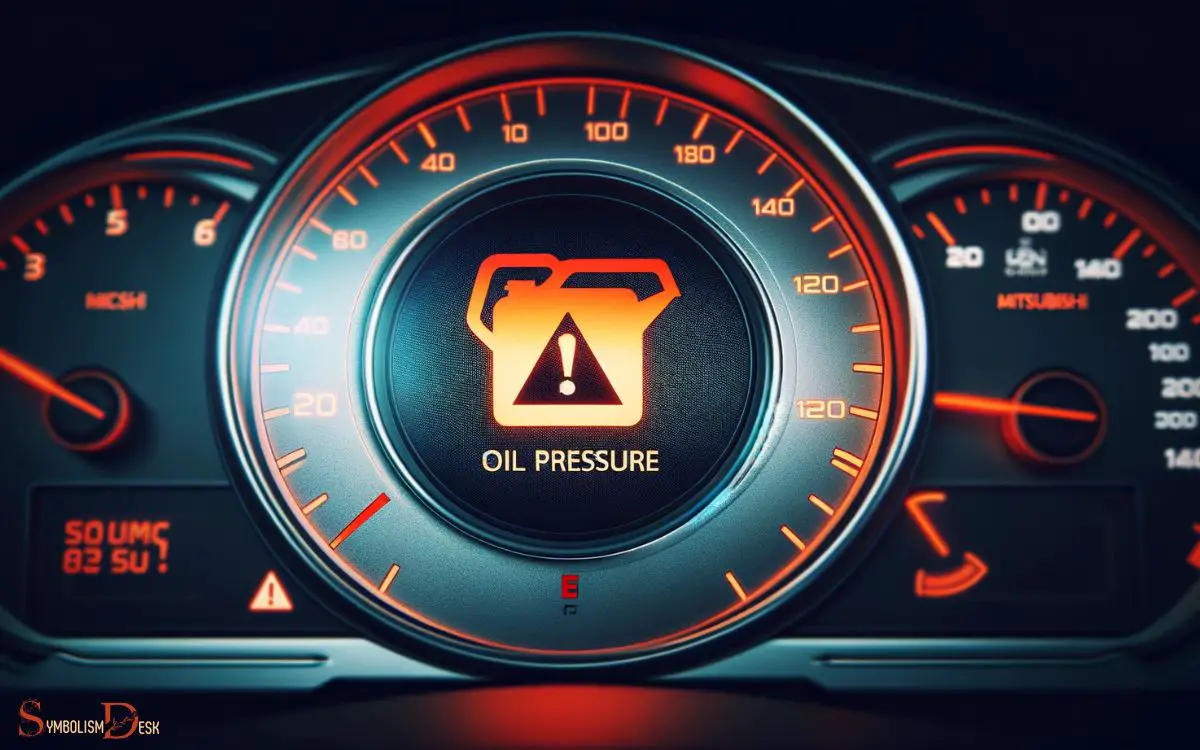
Oil Pressure Indicator Explanation
Drivers should be attentive to the oil pressure indicator, as it serves as a crucial signal for the engine’s health.
When the oil pressure warning light illuminates on the dashboard, it indicates that the oil pressure in the engine has dropped below a safe level.
This could be due to low oil levels, a failing oil pump, or a clogged oil filter. Ignoring this warning and continuing to drive could lead to serious engine damage.
Here’s a helpful table detailing the possible meanings of the oil pressure indicator:
| Indicator | Meaning |
|---|---|
| Light on | Low oil pressure, stop the vehicle immediately and check oil levels. |
| Light off | Normal oil pressure, no immediate action required. |
| Blinking | Fluctuating oil pressure, seek professional assistance. |
Drivers must never overlook the oil pressure indicator, as doing so could result in costly engine repairs.
Engine Damage Prevention Tips
To prevent engine damage related to the oil pressure warning, it is important for owners to regularly monitor their Mitsubishi car’s oil levels and promptly address any indicated issues.
Here are three crucial tips to prevent engine damage:
- Check the oil level regularly and top it up as needed, following the manufacturer’s recommendations.
- Ensure that the oil is changed at the recommended intervals to maintain its effectiveness in lubricating the engine components.
- Address any oil leaks promptly to prevent a drop in oil pressure, which can lead to engine damage.
Anti-Lock Brake System (ABS) Warning
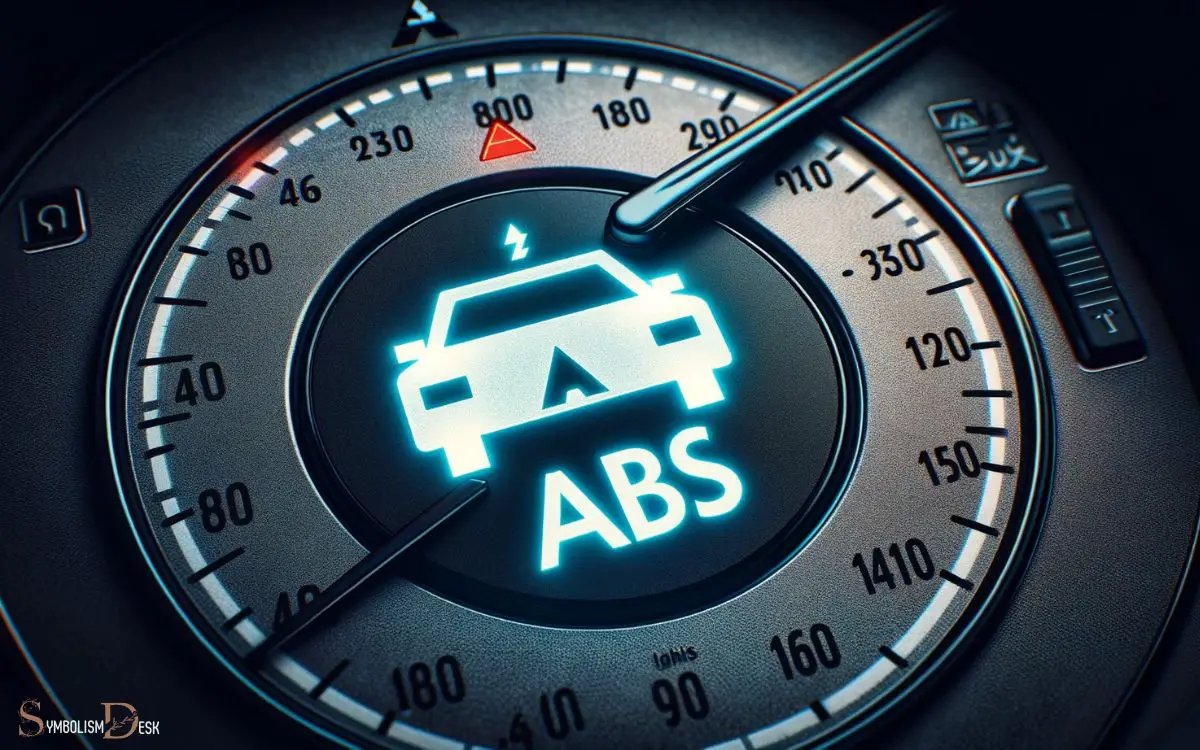
How does the anti-lock brake system (ABS) warning light function in Mitsubishi vehicles?
- The ABS warning light illuminates when the system detects a malfunction, indicating that the anti-lock brake system is not functioning properly.
- It is essential to have the ABS system inspected by a qualified technician to identify and rectify any issues.
- When the ABS warning light is on, the vehicle’s standard braking system will still operate, but it is advisable to drive cautiously and have the ABS system checked at the earliest convenience.
The ABS warning light serves as a crucial indicator of any potential problems with the anti-lock brake system in Mitsubishi vehicles, ensuring the safety and functionality of the braking system.
Electronic Stability Control (ESC) Indicator
One of the most critical dashboard indicators in Mitsubishi vehicles is the ESC warning light, which signifies the status of the Electronic Stability Control system.
ESC helps to prevent skidding and loss of control by automatically applying brakes to individual wheels if it detects the vehicle is losing traction. When the ESC warning light illuminates, it indicates a potential issue with the system that requires attention.
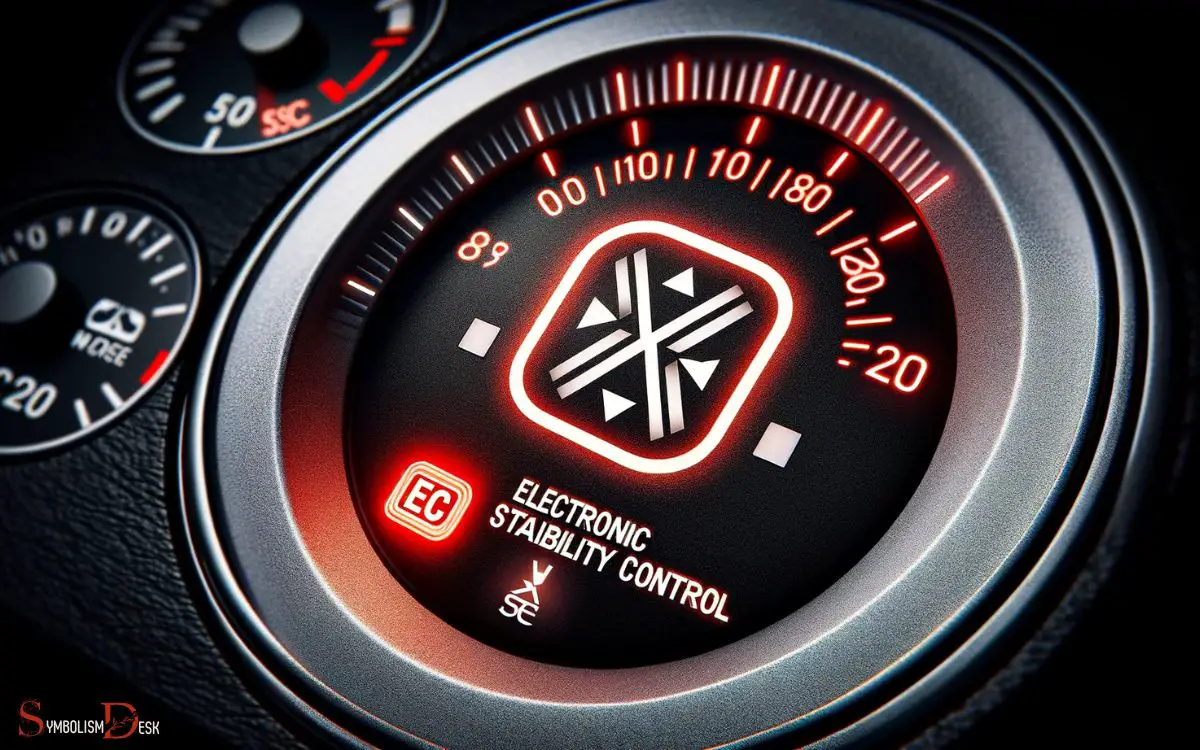
Here is a table summarizing the meanings of the ESC indicator light:
| Symbol | Meaning |
|---|---|
| ESC Light | ESC system is actively engaged |
| Flashing | ESC system is actively working |
| Solid | ESC system has a fault or is off |
| OFF | ESC system has been manually turned off |
| Service Required | ESC system requires maintenance |
It’s important to address any issues indicated by the ESC warning light promptly to ensure the system functions effectively for vehicle safety.
Conclusion
In the intricate web of symbols that adorn the Mitsubishi car dashboard, each one serves as a guidepost on the journey of driving.
From the Check Engine light that signals potential issues to the Tire Pressure Monitoring system that ensures safety, these symbols speak a language of caution and care. They are designed to keep drivers informed, prompting necessary action to maintain optimal vehicle performance. Understanding these alerts, such as the Mazda 3 dashboard light meanings, can prevent minor issues from escalating into costly repairs. Staying attuned to these indicators not only enhances safety but also prolongs the life of your car.
Understanding their meanings allows drivers to navigate the road with confidence, knowing that their vehicle is equipped to communicate and protect.





